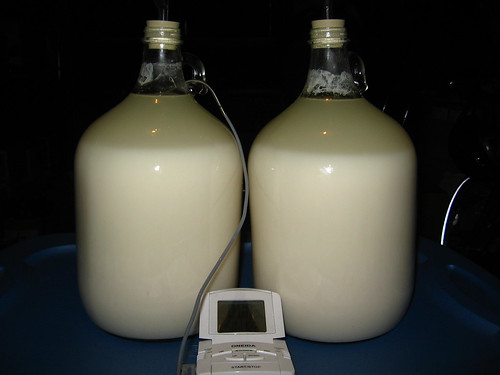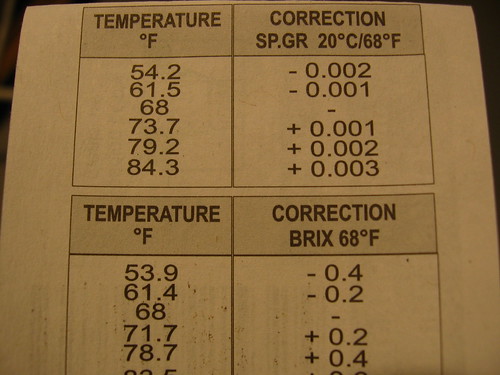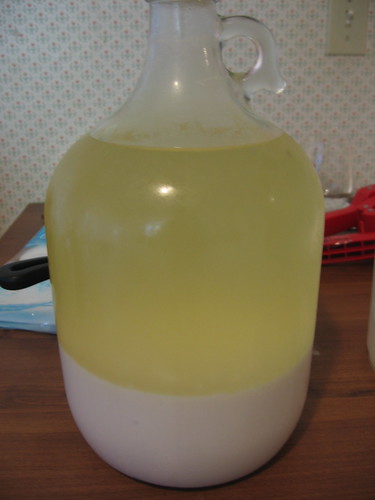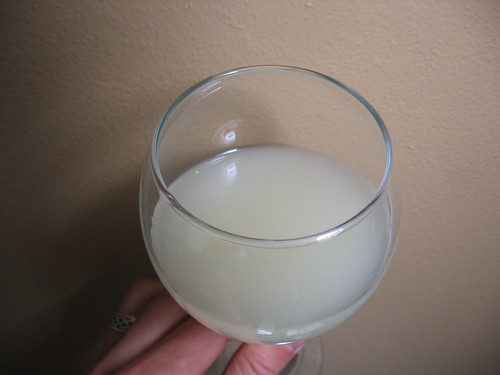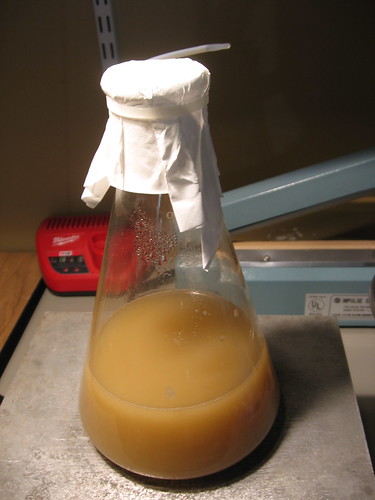Cool. Well, I live in Oregon and I have a batch going right now. I am using the standard 10lb rice recipe. Here are the details
Fermenters:
Moto Fermenter: 1/2 gal wide mouth mason jar with filter membrane lid
Primary Fermenter: 6 gal plastic bucket with airlock
Secondary Fermenters: 1 gallon jugs
Rice: 60% polish
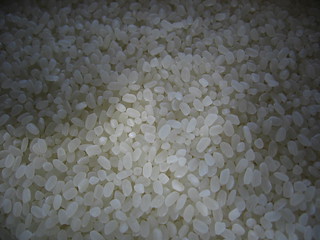
Koji: 60% polish Akita Konno Koji (100F:40 hours) ------> Vacuum sealed and frozen for 3 months

Water: distilled EartH20
Yeast: White Labs WLP705

Additional moto ingredients:
Epsom Salt, Lactic Acid, Brewcraft Yeast Nutrient, Morton Salt substitute (not shown in img.)
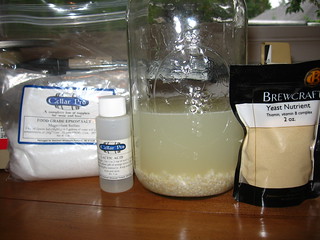
Moto: Sokujo started evening of 12/30/12
Hatsuzoe: Added morning of 1/6/13 , held at Room temp 63-66F
Nakazoe: Added morning of 1/8/13, held at Room temp 63-66F
Tomezoe: Added 1/09/13 evening, held at Garage temp 49-51F
No addition at Yodan
Below are some daily notes about the ensuing Moromi
1/11/13: I took a very cloudy SG reading of the sake on and got 1.044. Not sure if that is really indicative of how the ferment is going or not though.
1/19/13: Activity in airlock has stopped? Bad seal on lid or stopper? Perhaps the temps got too cold (39-42F) and stalled the ferment?
1/20/13: Brought the ferment inside, warmed to 65F, gave a light stir, replaced airlock and stopper with a new one.
1/21/13: Still no activity in airlock, temp still at 65F. I put my ear to the bucket and I can hear a bunch of bubbling, fizzing, and gurgles. The ferment sounds plenty active…there just aren’t any bubbles in the airlock.
1/22/13: Moved the ferment back to the garage where temps are fluctuating between 49-54F (night/day)
1/22-1/29: Ferment is completely left alone, in the dark garage, for 7 more days.
1/29/13: Press sake and transfer to secondaries: As an experiment, I pressed my sake by using a “6-5-6” stack of nested buckets to press the sake.
Here are some pics of the pressing set up:
Fine mesh bag

6-5-6 bucket press
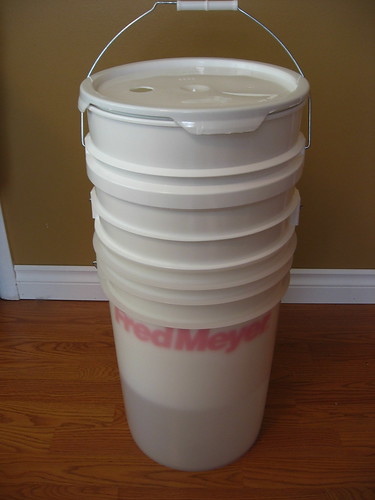
Press action:
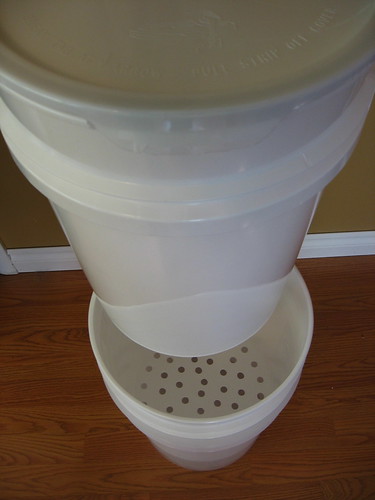
Volume after pressing: @ 2.1 gal. Very cloudy…
1/29/13: I filled two 1 gal. jugs using an autosiphon and bottling wand to the bottom of the handle and placed them under airlock. The 0.1 gal. got set aside in the fridge to sip on and analyze.
1/30/13: Here is what they looked like 24hrs later at 52F.
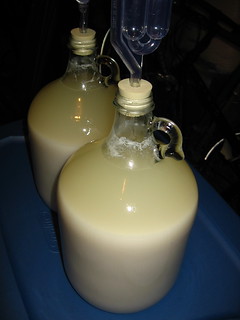
1/31/13 - 2/5/13: Here is what they have looked like since 1/31/13. They have gone from having a nice sediment layer beginning to form to what is now a bubbling cloudy mass. The temp is still fluctuating between 52-54F in the garage.
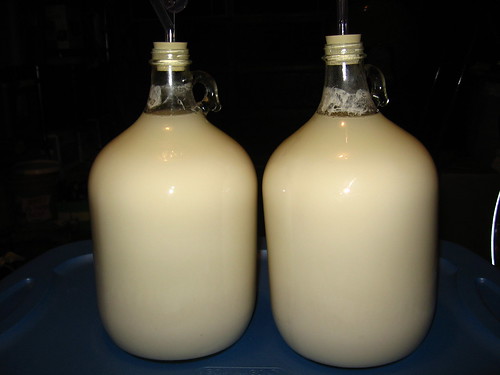
Since placing the moromi into the secondaries, there has been a good deal of activity in the airlock. Today I recorded about 8 burps/min.
Anyhow, that is where I am at with this brew as of today. I haven’t taken another gravity reading or anything. I really like that the jugs are well topped up at this point and don’t want to loose any to a gravity reading.
Its been about 1.5 years since my last sake brew and I can’t remember if this level of ferment/cloudiness is normal for this stage.
Can anyone gauge, by the information I’ve given so far, as to whether or not the ferment is going as it is supposed to be going?
I feel like there should be more sediment in the jugs by now. Maybe?
Lastly can anyone suggest some good qualitative tests that I can conduct on my sake to compare its characteristics with really well made sake?
Thanks and I’m looking forward to some opinions/advice about how I can improve the quality of this brew from this point on.
Kanzukuri!
-MPFbrewer









